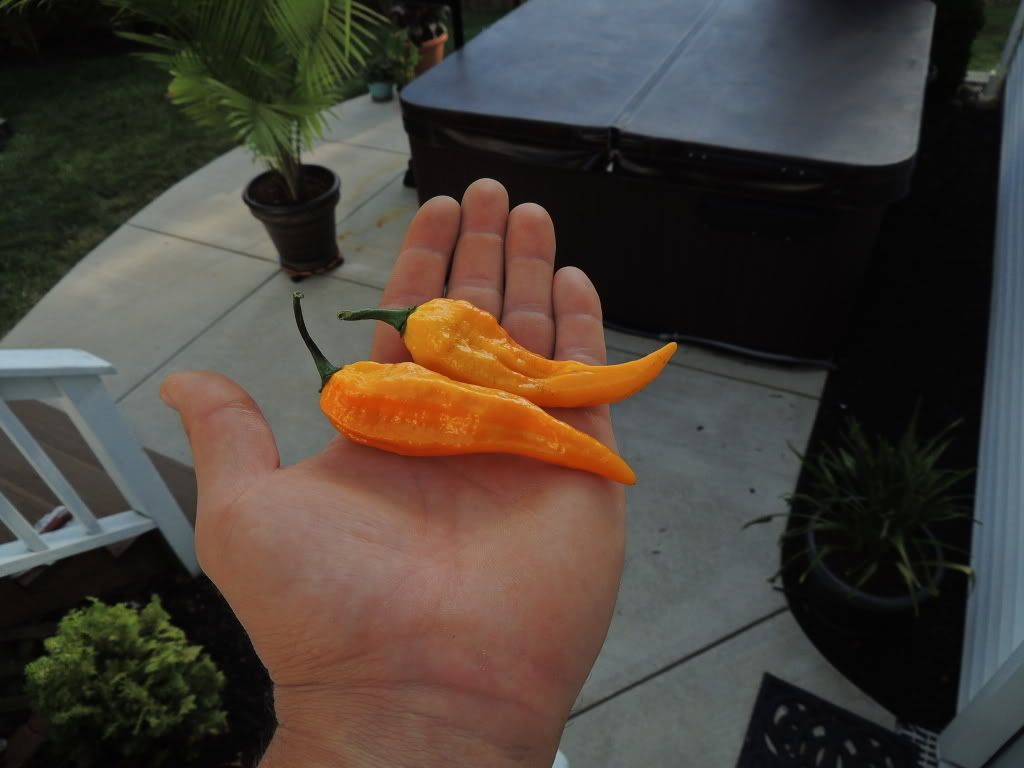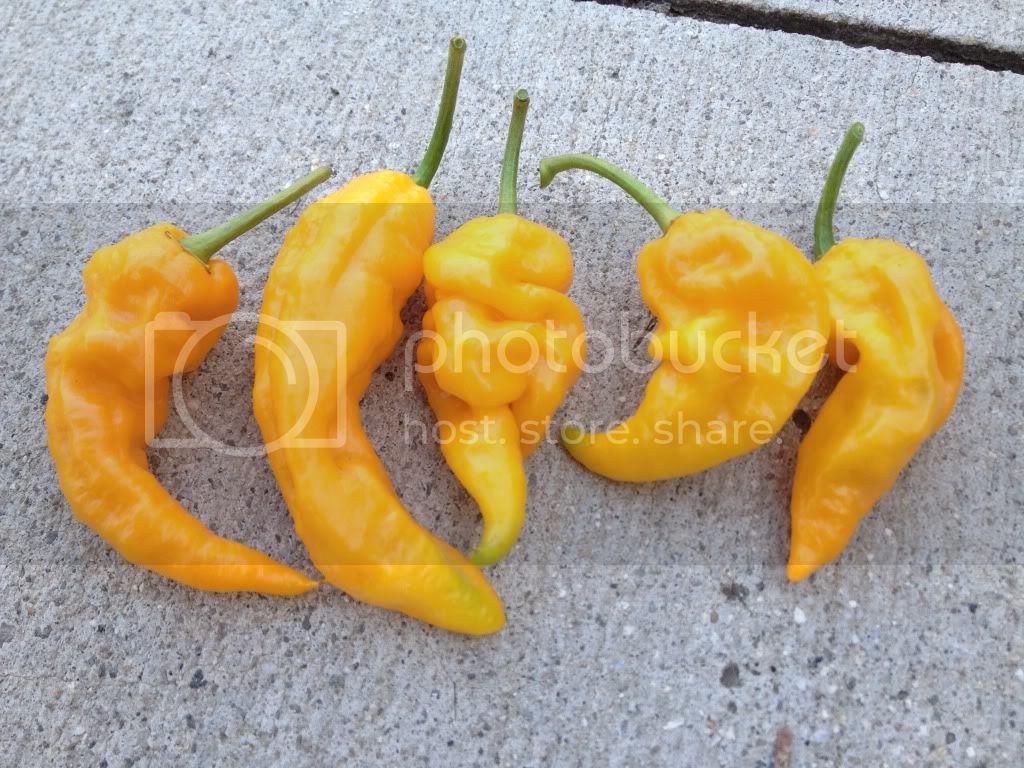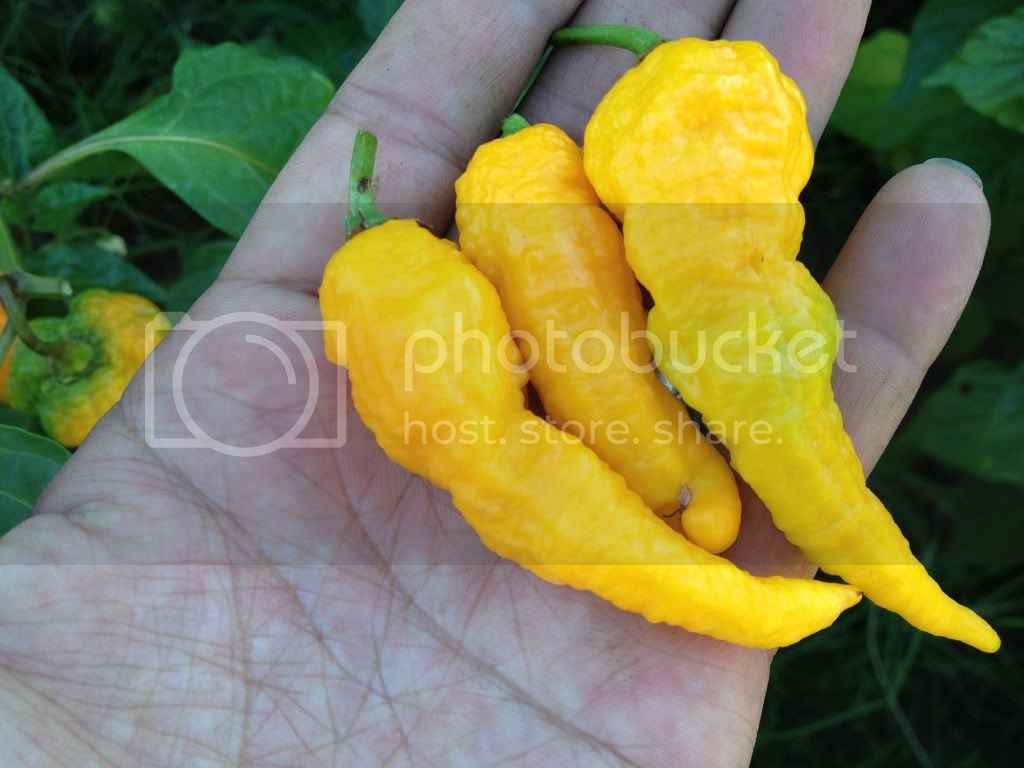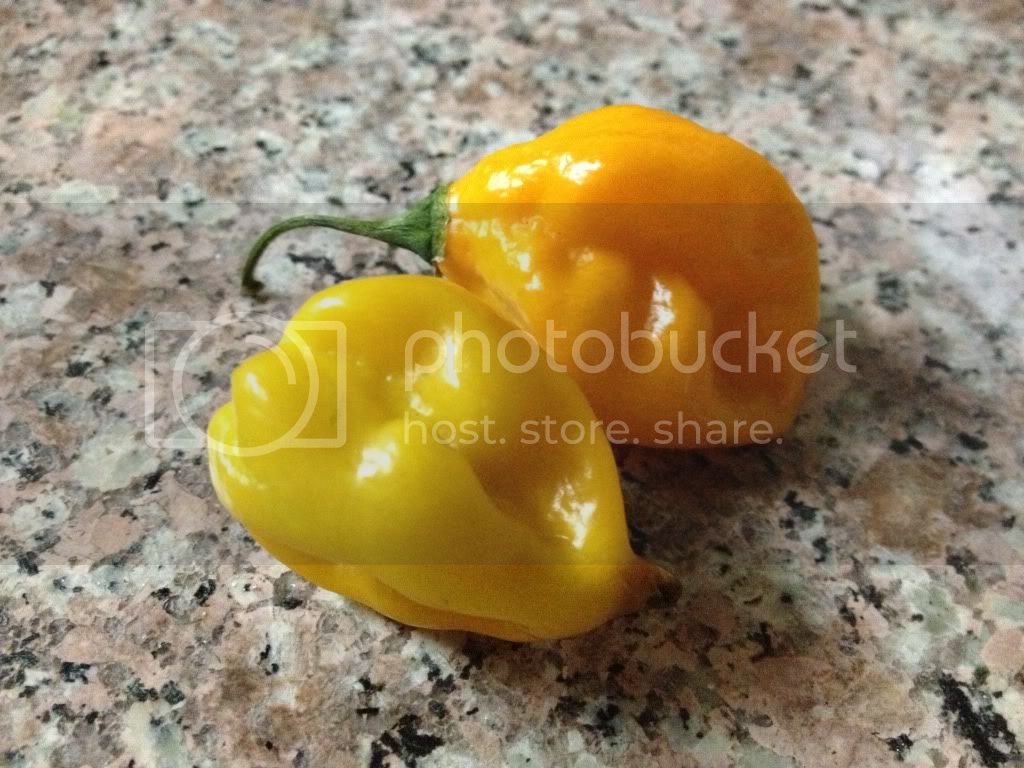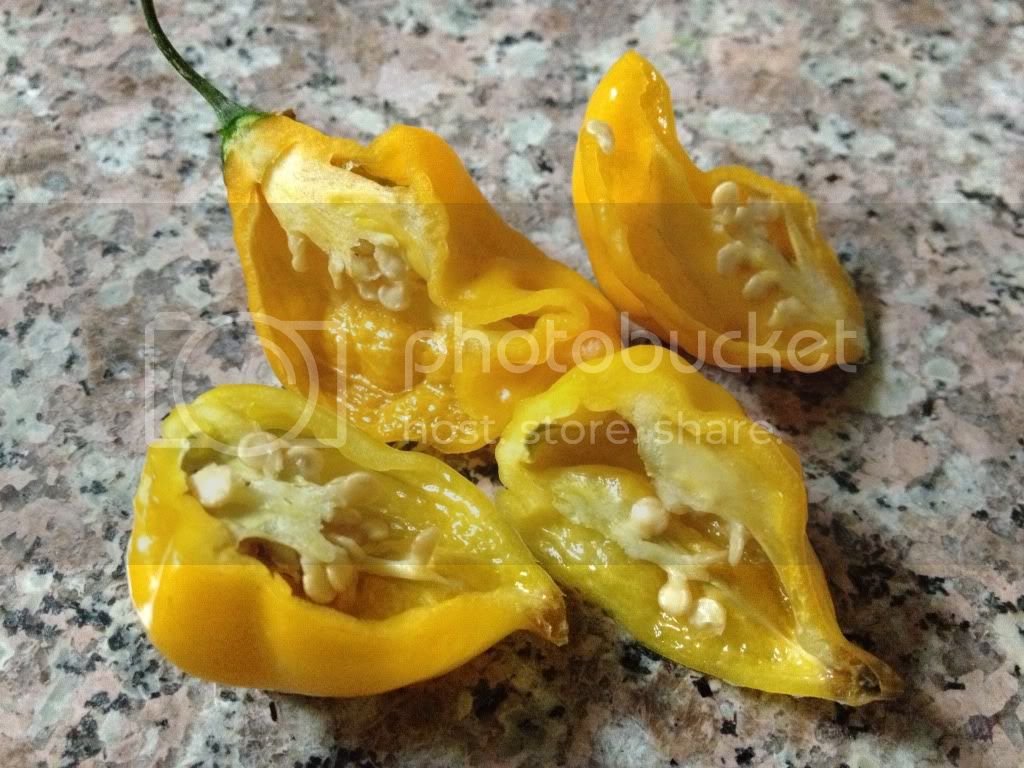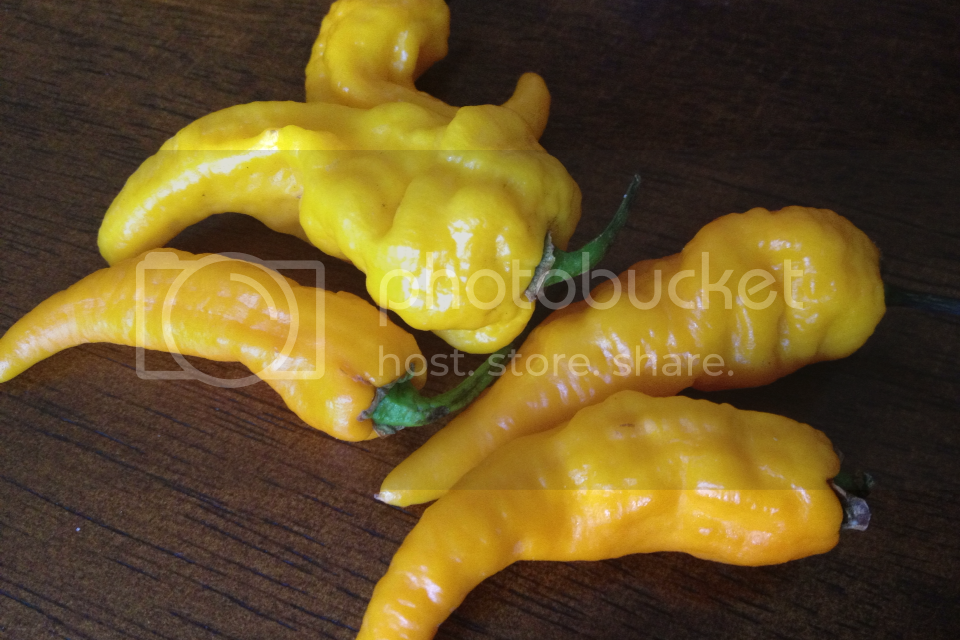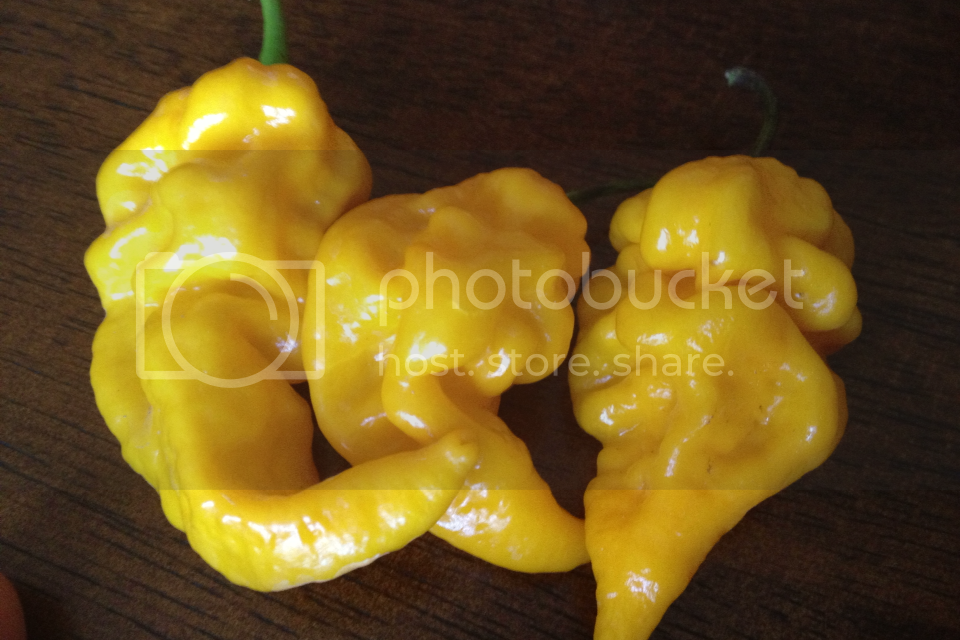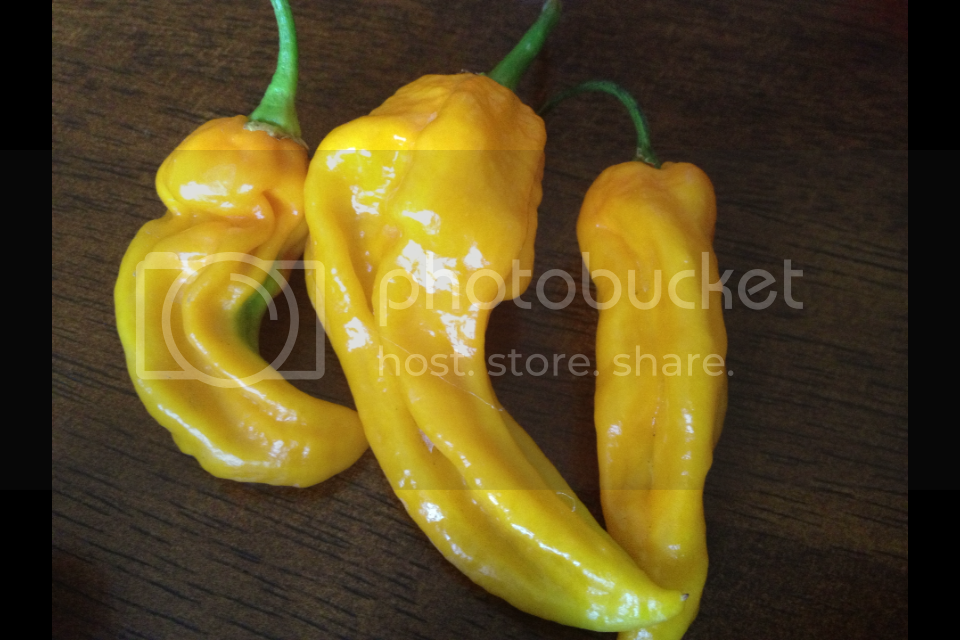All the different colored Fataliis aside, the original yellow Fatalii is a classic.
The bhuts and nagas are often conveniently named to help with the diversity found in that group (Naga Morich, Dorset Naga, etc.).
Sometimes Fatalii variation between strains is subtle, but it can also be not-so-subtle in terms of pod length, ripe coloration, and production. Has anyone come across any way to tell the different Fatallis apart? Have you seen any named Fatalii strains?
The bhuts and nagas are often conveniently named to help with the diversity found in that group (Naga Morich, Dorset Naga, etc.).
Sometimes Fatalii variation between strains is subtle, but it can also be not-so-subtle in terms of pod length, ripe coloration, and production. Has anyone come across any way to tell the different Fatallis apart? Have you seen any named Fatalii strains?

